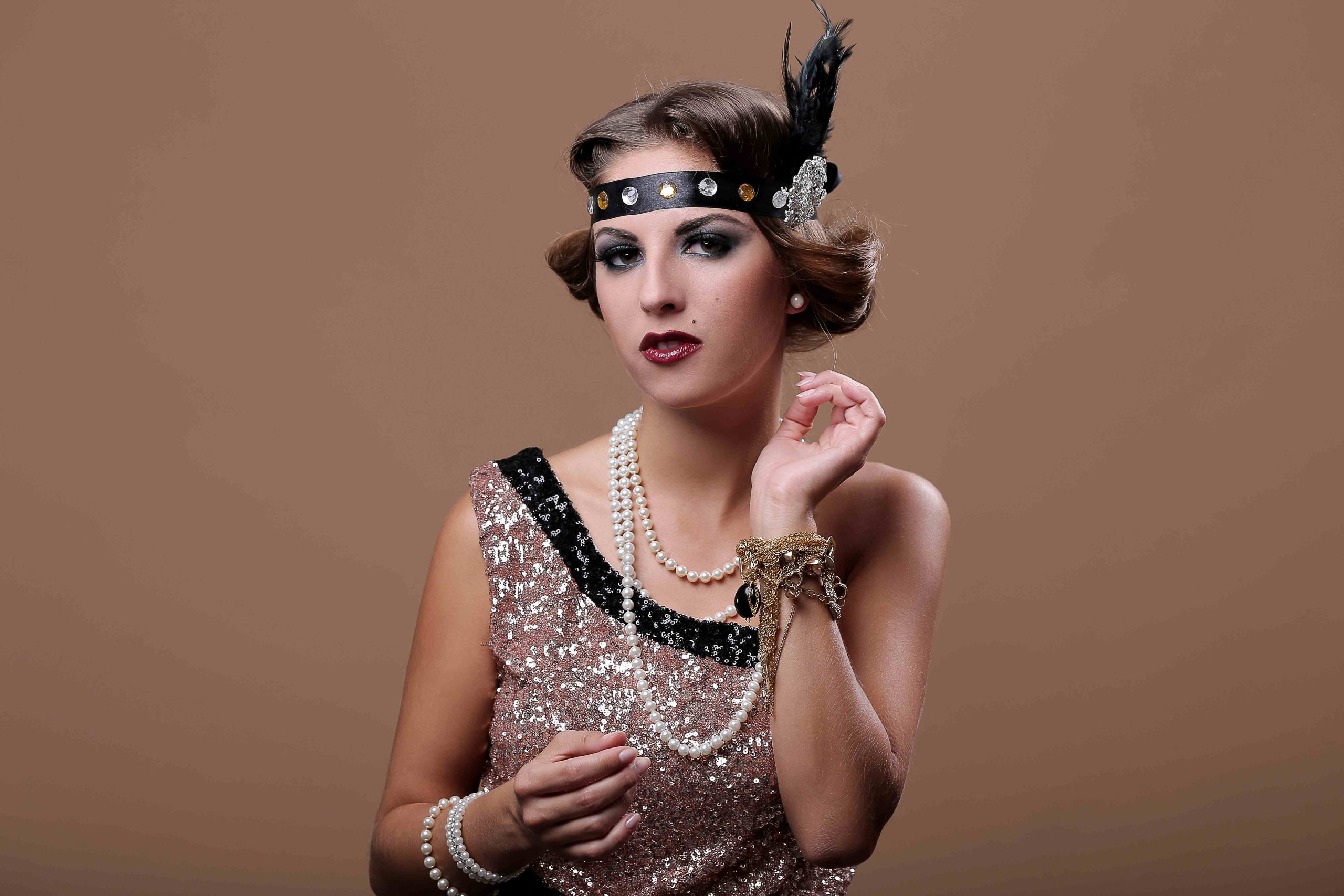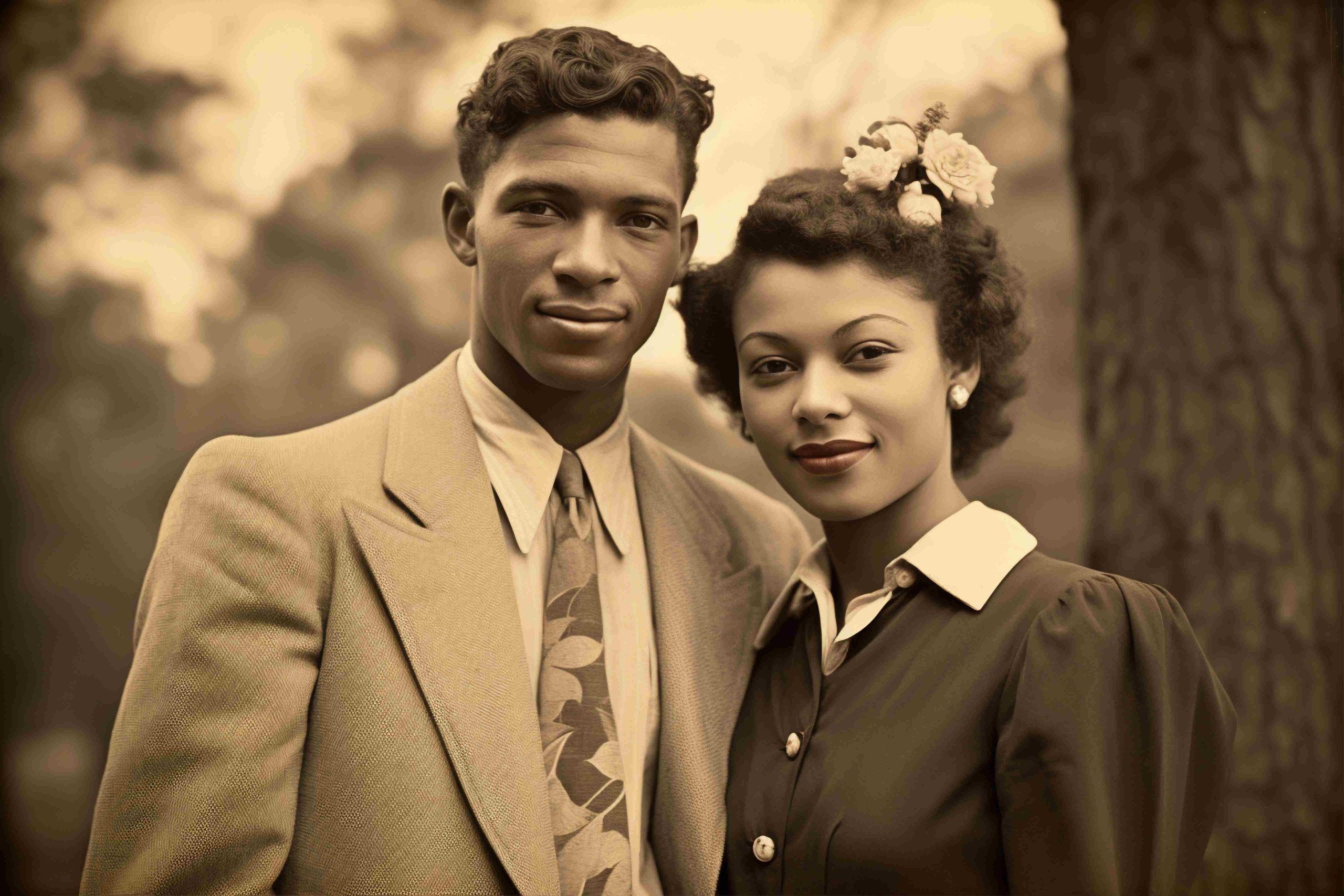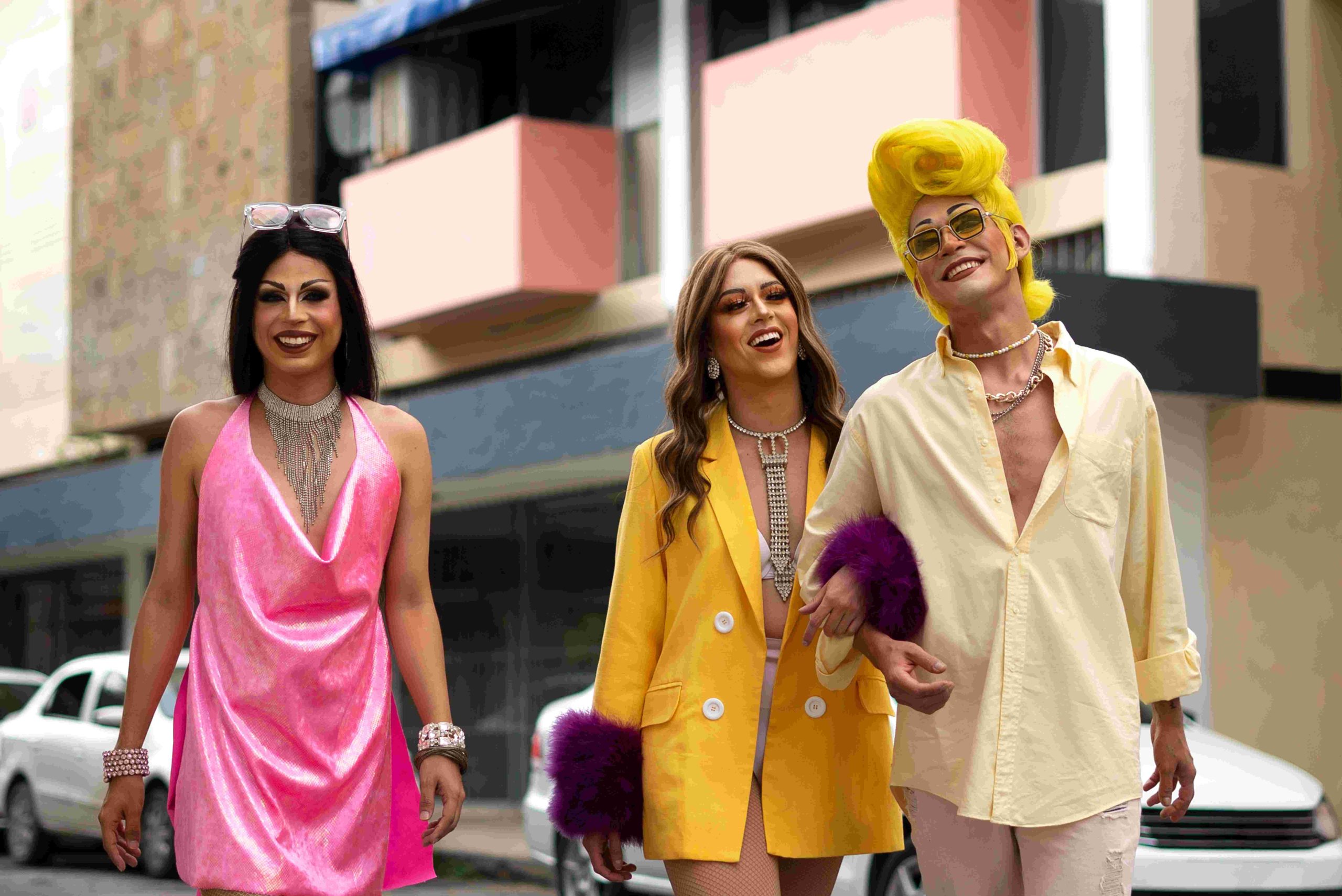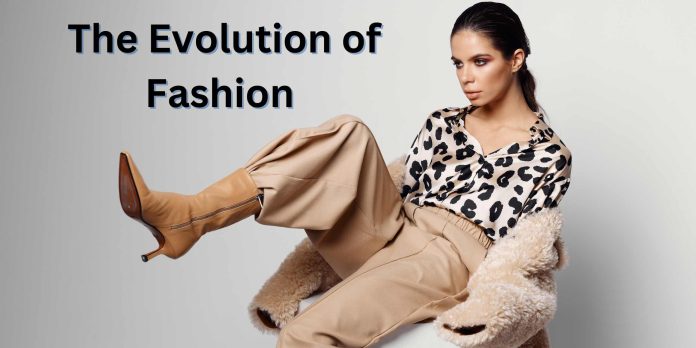How styles have changed over the decades is a fascinating journey through time, revealing how fashion reflects society’s mood, culture, and major events. Fashion is like a time machine, showing us how people lived and what they valued in different eras. In the 1920s, fashion was all about flapper dresses and freedom. The 1930s brought elegance despite tough times. During the 1940s, practical styles emerged due to World War II. The 1950s saw a return to femininity with full skirts and petticoats. The 1960s were revolutionary with miniskirts and bold patterns. The 1970s embraced glamour with bell-bottoms and disco looks. The 1980s were all about bold colors and big shoulders. Finally, the 1990s to today have seen a mix of old and new, with fast fashion and sustainability becoming important. Let’s take a journey through time and explore how fashion has evolved over the decades.
Table of Contents
ToggleHow Styles Have Changed Over the Decades
How styles have changed over the decades is a reflection of the times we live in. Each decade brings its own unique trends influenced by cultural, social, and economic factors. Let’s take a closer look at how fashion has evolved from the 1920s to today.
The Roaring Twenties: Flappers and Freedom
The 1920s were a time of great change and liberation. After World War I, people were eager to break free from the past and embrace new lifestyles. This decade, known as the Roaring Twenties, was marked by significant social and cultural shifts, which were reflected in fashion. Women’s fashion, in particular, underwent a dramatic transformation.
The flapper dress became the iconic symbol of the 1920s. These dresses were shorter than ever before, often ending just below the knee, and were designed to allow freedom of movement. They featured loose, straight cuts with dropped waists, which contrasted sharply with the tight corsets and long skirts of the previous era. Flapper dresses were often adorned with fringe, beads, and sequins, making them perfect for the energetic dances of the time, like the Charleston.

Accessories also played a crucial role in the flapper look. Women wore cloche hats, which were close-fitting and covered the forehead. Long strands of pearls, feathered headbands, and bold, geometric jewelry added to the glamour. Hairstyles were shorter, with the bob cut becoming incredibly popular. Women also started using more makeup, such as dark lipstick and smoky eyes, to complete their look.
Men’s fashion in the 1920s also saw changes, although less dramatic than women’s fashion. Men wore suits with high-waisted trousers and jackets with wide lapels. The style was more relaxed compared to the stiff, formal wear of the previous decades. Accessories like fedoras and pocket watches were popular among men.
Overall, the 1920s was a decade of breaking away from tradition and embracing new freedoms, and this was vividly reflected in the fashion of the time.
The Thrifty Thirties: Elegance in the Face of Adversity
The 1930s were marked by the Great Depression, a time of economic hardship that affected millions of people worldwide. Despite the financial struggles, fashion in the 1930s maintained a sense of elegance and sophistication. People had to be resourceful with their clothing, often mending and repurposing old garments, but they still managed to dress stylishly.
Women’s fashion in the 1930s was characterized by longer hemlines and more fitted silhouettes. Dresses often had bias cuts, which allowed the fabric to drape elegantly over the body. Evening gowns were particularly glamorous, featuring flowing fabrics like silk and satin, and adorned with sequins or intricate beadwork. Daywear was more practical but still stylish, with tailored suits and dresses that emphasized a woman’s natural shape.

Hollywood had a significant influence on fashion during the 1930s. Movie stars like Greta Garbo and Joan Crawford became style icons, and people eagerly followed their fashion choices. The glamorous looks seen on the silver screen were often emulated in everyday life. This era also saw the rise of the “Hollywood look,” characterized by sophisticated and elegant clothing that was accessible even during tough economic times.
Men’s fashion in the 1930s was also influenced by the economic situation. Suits were still the standard attire, but they became more streamlined and less extravagant. Trousers were high-waisted, often with wide legs, and jackets had broader shoulders. Accessories like fedoras and ties remained popular. Despite the simplicity, men’s fashion retained a sense of elegance.
The 1930s also saw the introduction of new fabrics and innovations in clothing design. Synthetic fabrics like rayon became popular because they were more affordable than silk. This decade was a testament to the resilience and creativity of people who managed to look stylish despite the financial constraints.
The Forties: Function Meets Fashion
The 1940s were dominated by World War II, which had a profound impact on all aspects of life, including fashion. Clothing had to be practical and functional due to the rationing of materials and the need to support the war effort. Despite these challenges, people still found ways to express their style.
Women’s fashion during the war years was characterized by simplicity and utility. Clothing was made from durable fabrics like wool and rayon, and designs were straightforward and functional. Dresses and skirts were knee-length, and suits with fitted jackets and A-line skirts became popular. The Utility Clothing Scheme in the UK, for example, ensured that garments were made with minimal fabric and no unnecessary embellishments.
One notable fashion trend of the 1940s was the “Victory Suit.” This suit, worn by both men and women, was practical and stylish. For women, it typically included a tailored jacket and a matching skirt. The jackets had broad shoulders, a feature that gave them a military-inspired look. Accessories were minimal, but women often wore hats and gloves to complete their outfits.
After the war, fashion began to change. In 1947, Christian Dior introduced the “New Look,” which was a stark departure from the practical styles of the war years. The New Look featured full skirts, cinched waists, and rounded shoulders, creating an hourglass silhouette. This style was luxurious and feminine, offering a sense of opulence after years of austerity.
Men’s fashion in the 1940s also saw changes due to the war. Military uniforms influenced civilian clothing, with styles becoming more streamlined and practical. Suits were less extravagant, with narrower lapels and a more fitted silhouette. After the war, men’s fashion began to embrace a more relaxed style, with the introduction of casual wear like sports jackets and slacks.
Despite the challenges of the 1940s, fashion managed to evolve and adapt, reflecting both the hardships and the hopes of the time.
The Fabulous Fifties: Revival of Femininity
The 1950s were a time of prosperity and optimism, and this was reflected in the fashion of the era. After the hardships of the 1940s, people were eager to embrace a sense of luxury and femininity. The 1950s saw a return to more traditionally feminine styles, with an emphasis on elegance and sophistication.
Women’s fashion in the 1950s was characterized by full skirts, fitted bodices, and cinched waists. The hourglass figure became the ideal, and women wore dresses that accentuated their curves. Petticoats were often worn under skirts to add volume, creating a dramatic and glamorous look. Popular fabrics included cotton, silk, and tulle, often adorned with floral prints or polka dots.

The influence of Hollywood was significant during this decade. Movie stars like Marilyn Monroe and Audrey Hepburn became fashion icons, and their style choices were eagerly followed by women everywhere. Monroe’s glamorous and sensual style, with figure-hugging dresses and bold red lipstick, contrasted with Hepburn’s elegant and sophisticated look, epitomized by her iconic little black dress in “Breakfast at Tiffany’s.”
Accessories were an essential part of the 1950s look. Women wore gloves, hats, and pearls to complete their outfits. Handbags were often small and structured, adding to the polished appearance. Hairstyles were neat and feminine, with popular styles including the beehive and the ponytail.
Men’s fashion in the 1950s also embraced a sense of formality and elegance. Suits were tailored and well-fitted, with narrow lapels and slim trousers. The “Ivy League” look, characterized by button-down shirts, sweaters, and loafers, became popular among young men. Casual wear also gained popularity, with items like jeans and T-shirts becoming wardrobe staples.
The 1950s were a time of refinement and femininity in fashion. People embraced a sense of elegance and luxury, reflecting the optimism and prosperity of the post-war era.
Also Read: How did Street Art Evolve in the United States?
The Swinging Sixties: Youth Revolution
The 1960s were a decade of cultural and social revolution, and fashion was at the forefront of these changes. The youth of the 1960s rejected the conservative styles of the past and embraced bold, innovative fashions that reflected their desire for freedom and individuality.
One of the most iconic fashion trends of the 1960s was the miniskirt. Introduced by British designer Mary Quant, the miniskirt revolutionized women’s fashion. It was a symbol of liberation and youth, allowing women to express their individuality and break free from traditional norms. The mod look, characterized by simple lines, bright colors, and geometric patterns, also became popular during this time.
The 1960s were heavily influenced by cultural movements and music. The Beatles, with their mop-top haircuts and tailored suits, became style icons for young men. The hippie movement, which emerged later in the decade, brought a more relaxed and bohemian style. Hippie fashion included bell-bottoms, tie-dye shirts, fringe, and floral patterns. This style was a reflection of the counterculture’s desire for peace and love.
Accessories in the 1960s were bold and playful. Women wore go-go boots, oversized sunglasses, and large, colorful jewelry. Hairstyles also became more experimental, with styles like the beehive and the pixie cut gaining popularity. Makeup trends included dramatic eye makeup with thick eyeliner and false eyelashes.
Men’s fashion in the 1960s also underwent significant changes. The mod style, with its tailored suits and skinny ties, was popular among young men. Later in the decade, the influence of the hippie movement led to more casual and eclectic styles, with men wearing jeans, tie-dye shirts, and leather jackets.
The 1960s were a time of bold experimentation and cultural revolution in fashion. The styles of this decade reflected the desire for freedom, individuality, and change.
The Disco Seventies: Glamour and Glitz
The 1970s were a decade of glamour and glitz, characterized by bold and flashy fashion trends. This era saw the rise of disco culture, which had a significant influence on the fashion of the time. People embraced a sense of fun and extravagance, and this was vividly reflected in their clothing choices.
One of the most iconic fashion trends of the 1970s was the bell-bottom pants. These pants were fitted at the waist and thighs and flared out dramatically from the knee down. They were often paired with platform shoes, which added height and made a bold fashion statement. Women and men alike embraced this style, making it a symbol of the decade.
Disco fashion was all about glamour and sparkle. People wore shiny, metallic fabrics, sequins, and bold patterns. Jumpsuits became popular, offering a sleek and stylish look that was perfect for the dance floor. Dresses with plunging necklines and high slits were also in vogue, adding to the overall sense of extravagance.
The 1970s also saw the rise of unisex fashion. Men and women often wore similar styles, such as bell-bottoms, platform shoes, and fitted shirts. This trend reflected the changing attitudes towards gender roles and equality. Casual wear became more popular, with items like jeans and T-shirts becoming wardrobe staples for both sexes.
Accessories in the 1970s were bold and eye-catching. People wore large, chunky jewelry, wide belts, and oversized sunglasses. Hairstyles were also dramatic, with styles like the Afro, feathered hair, and the shag cut gaining popularity. Makeup trends included bold eyeshadow colors, glossy lips, and a natural, sun-kissed look.
The 1970s were also influenced by the punk movement, which emerged later in the decade. Punk fashion was characterized by edgy and rebellious styles, such as leather jackets, ripped jeans, and band T-shirts. This movement rejected the glamour of disco and embraced a more raw and DIY aesthetic.
Overall, the 1970s were a time of bold and extravagant fashion. People embraced a sense of fun and freedom, and this was vividly reflected in their clothing choices.
The Excessive Eighties: Bold and Brash
The 1980s were known for their bold and brash fashion choices, reflecting the excess and exuberance of the decade. This era was characterized by bright colors, dramatic silhouettes, and a sense of over-the-top glamour. Pop culture and music played a significant role in shaping the fashion trends of the 1980s.
One of the most iconic fashion trends of the 1980s was the power suit. Women embraced the power suit as a symbol of independence and professionalism. These suits featured broad shoulder pads, fitted jackets, and matching skirts or trousers. The look was often completed with bold accessories, such as large earrings and statement necklaces. This style reflected the increasing presence of women in the workforce and their desire to assert their authority.
Neon colors and bold patterns were also a hallmark of 1980s fashion. People wore bright, eye-catching colors like electric blue, hot pink, and neon green. Patterns like animal prints, geometric shapes, and abstract designs were popular. This trend was often seen in casual wear, such as leggings, oversized sweatshirts, and graphic T-shirts.
Pop culture and music had a significant influence on fashion in the 1980s. Stars like Madonna and Michael Jackson became style icons, and their fashion choices were eagerly followed by fans. Madonna’s eclectic and daring style, characterized by lace gloves, corsets, and layered jewelry, set trends for women everywhere. Michael Jackson’s signature look, with his sequined gloves, military-inspired jackets, and high-water pants, also became iconic.
Accessories in the 1980s were big and bold. People wore large, colorful jewelry, wide belts, and oversized sunglasses. Hairstyles were dramatic, with styles like the mullet, big curls, and teased hair gaining popularity. Makeup trends included bright eyeshadow colors, bold lipstick, and heavy blush.

The 1980s were also a time of luxury and excess in fashion. High fashion designers and luxury brands became more prominent, with labels like Versace, Chanel, and Gucci gaining popularity. People embraced a sense of opulence, reflected in their clothing choices and overall style.
Overall, the 1980s were a decade of bold and extravagant fashion. The styles of this era reflected the excess and exuberance of the time, with people embracing a sense of fun and over-the-top glamour.
The Nineties to Today: A Blend of Retro and Innovation
From the 1990s to today, fashion has seen a blend of retro and innovative styles, reflecting the ever-changing world we live in. The 1990s brought a mix of minimalism and grunge, while the 2000s and 2010s saw the rise of fast fashion and a growing emphasis on sustainability and ethical choices.
The 1990s were characterized by a sense of laid-back and casual style. Grunge fashion, influenced by the music scene, became incredibly popular. This style included flannel shirts, ripped jeans, oversized sweaters, and combat boots. The grunge look was all about effortless and anti-fashion, rejecting the bold and flashy styles of the 1980s.
Minimalism also became a significant trend in the 1990s. People embraced simple and clean lines, with neutral colors like black, white, and beige. Slip dresses, simple T-shirts, and tailored blazers were popular. This trend reflected a desire for simplicity and practicality in fashion.
The 2000s saw the rise of fast fashion, with brands like H&M, Zara, and Forever 21 making trendy clothing more accessible and affordable. This decade was characterized by a mix of styles, from the boho-chic look popularized by celebrities like Sienna Miller to the sporty and casual styles inspired by the hip-hop scene.

The 2010s brought a growing awareness of sustainability and ethical fashion. People became more conscious of the environmental and social impact of their clothing choices. This led to the rise of sustainable fashion brands and a focus on eco-friendly materials and practices. Vintage and second-hand shopping also gained popularity, as people looked for more sustainable and unique fashion options.
Today, fashion continues to evolve, reflecting the diverse and globalized world we live in. There is a blend of retro and innovative styles, with past trends often making a comeback. Technology has also played a significant role in shaping modern fashion, with the rise of online shopping, fashion influencers, and digital fashion shows.
Overall, fashion from the 1990s to today reflects a mix of retro and innovation, with an increasing emphasis on sustainability and ethical choices. The styles of this era show how fashion continues to evolve and adapt to the changing world around us.
Conclusion
Fashion has undergone incredible transformations over the decades, reflecting the cultural, social, and economic changes of each era. From the liberating flapper dresses of the 1920s to the bold and extravagant styles of the 1980s, each decade has left its unique mark on the fashion world. The 1990s introduced a mix of minimalism and grunge, while the 2000s and 2010s saw the rise of fast fashion and a growing awareness of sustainability. Today, fashion is a blend of retro and innovation, with an increasing focus on ethical choices and eco-friendly practices. As we look back on the evolution of fashion, it’s clear that clothing is more than just fabric and thread—it’s a reflection of our history, values, and aspirations. Fashion will continue to evolve, inspired by the past and shaped by the future, always reflecting the dynamic world we live in.
